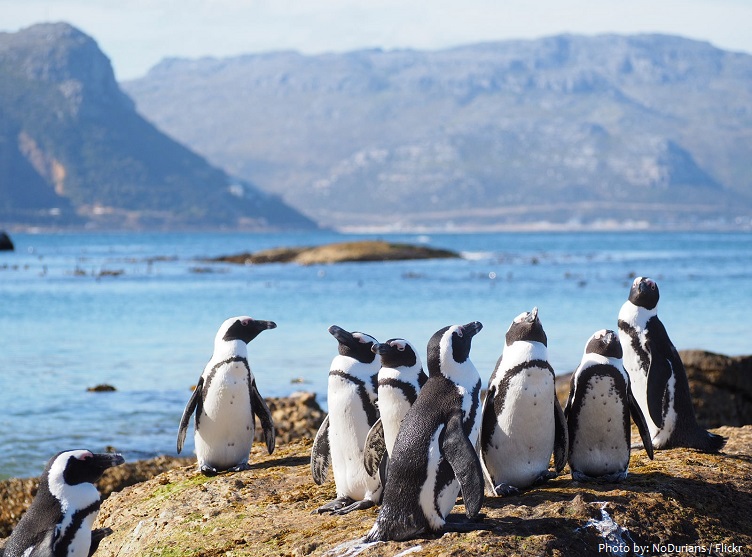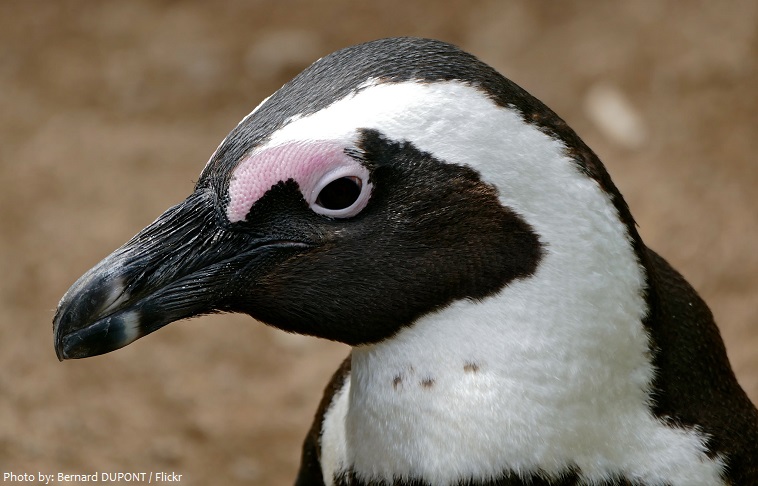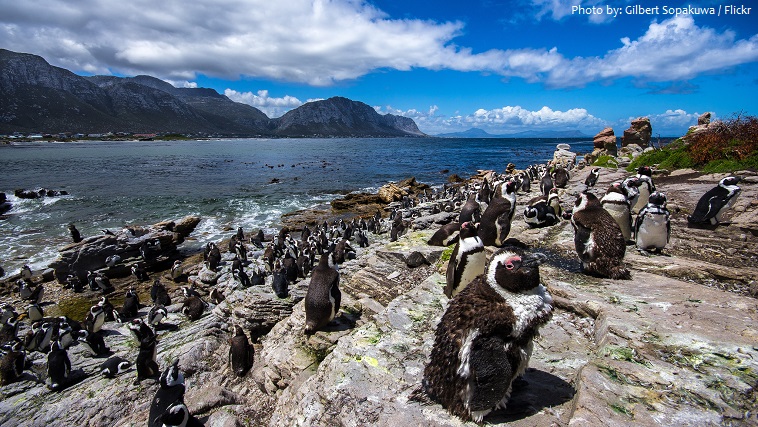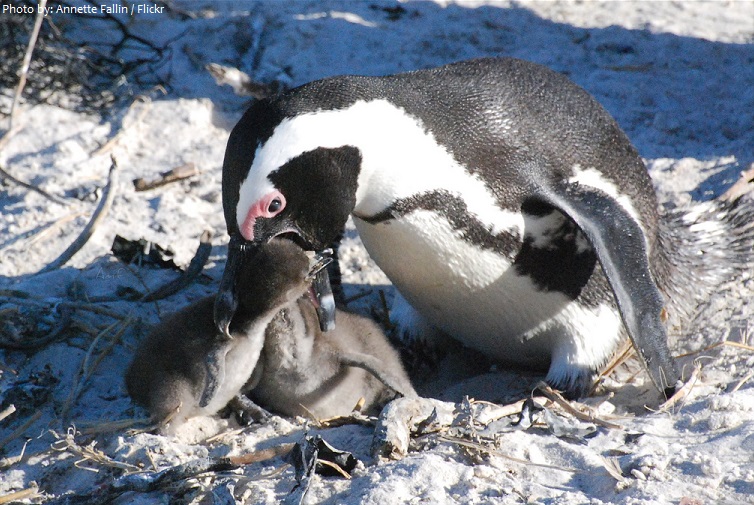The African penguin (Spheniscus demersus), also known as the jackass penguin and black-footed penguin, is a species of penguin.
It is the only penguin species found on the African continent.
African penguins are found in colonies on 24 islands between Namibia and Algoa Bay, near Port Elizabeth, South Africa.
The average lifespan of an African penguin is 10 to 27 years in the wild, and up to 30 in captivity.
African penguin is one of the smallest species. They grow from 60 to 70 cm (24 to 28 in) tall and weight between 2.2 and 3.5 kg (4.9 and 7.7 lb).
African penguins have a black stripe and black spots on the chest, the pattern of spots being unique for every penguin, like human fingerprints. The white and black plumage serves as camouflage to predators, with the white appearing to aquatic predators from below and the black appearing to aerial predators from above.
The pink gland above their eyes helps them to cope with changing temperatures. When the temperature gets hotter, the body of the African penguin sends more blood to these glands to be cooled by the air surrounding it. This then causes the gland to turn a darker shade of pink.
The animal has a distinct, sharply pointed beak and black feet.
African penguins forage in the open sea, where they pursue pelagic fish such as sardines and anchovies and marine invertebrates such as squid and small crustaceans. A penguin may consume up to 540 grams (19 ounce) of prey every day, but this may increase to over 1 kg (2.2 lb) when raising older chicks.
They can hold their breath over 2 minutes and dive over 120 meters (400 feet) deep!
African penguins can swim up to 20 km/h (12.5 mph) and can travel 30 to 70 km (18.5 to 43.5 mi) during each trip. They spend the night gathered together on shore and much of the day feeding in the water.
When penguins molt, they are unable to forage as their new feathers are not yet waterproof; therefore, they fast over the entire molting period, which in African penguins takes around three weeks.
These penguins are called jackass penguins because they emit a loud, braying, donkey-like call to communicate. There are three types of calls used: a bray, used to attract a mate; the yell, used to defend their territory; and the haw, used by mates to locate each other when one is on land and one is at sea.
Each individual has its own unique vocalization that distinguishes it from the others.
African penguins are monogamous. They breed in colonies, and pairs return to the same site each year. Female lay a clutch of two eggs. Incubation is undertaken equally by both parents for around 40 days. At least one parent guards the chicks for about one month, whereafter the chicks joins a crèche with other chicks, and both parents head out to sea to forage each day. Chicks fledge at 60 to 130 days.
Predators of African penguins include sharks and fur seals. While nesting, gulls, mongooses, caracals, Cape genets and domestic cats may prey on the penguins and their chicks.
Initially, their decline was due to the exploitation of eggs for food. Also, habitat alteration and disturbance associated with guano collection at breeding colonies contributed to their decline.
In November 2013 the African penguin was listed as endangered on the IUCN Red List of Threatened Species.
African penguins are believed to be one of the first penguin species to be discovered by humans.




